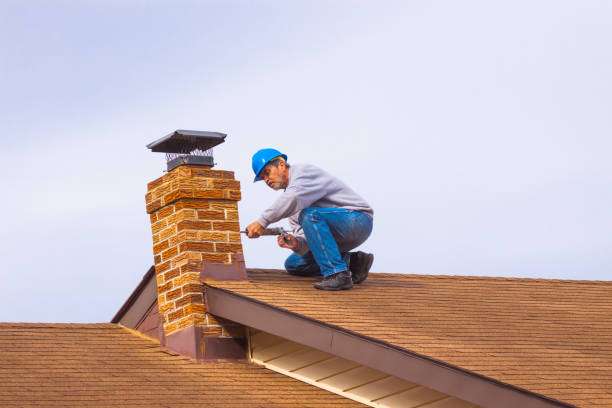Introduction
Chimneys are an essential part of any home, providing ventilation for fireplaces and ensuring the safe expulsion of smoke and gases. However, over time, chimneys can deteriorate due to weathering, age, and lack of maintenance. In this comprehensive guide, we’ll delve into the intricacies of chimney construction and restoration, covering everything from the materials used to the steps involved in restoration.
Understanding Chimney Construction
The Importance of Proper Chimney Construction
A well-constructed chimney is crucial for the safety and functionality of a home. It must be able to withstand high temperatures, endure harsh weather conditions, and effectively vent smoke and gases.
Materials Used in Chimney Construction
Bricks
Bricks are the most common material used in chimney construction due to their durability and heat resistance. High-quality bricks ensure the structural integrity of the chimney.
Mortar
Mortar acts as the binding agent for bricks, providing strength and stability to the chimney structure. It must be carefully mixed and applied to ensure proper adhesion.
Flue Liners
Flue liners are essential for protecting the chimney walls from heat and corrosion. They come in various materials such as clay, ceramic, and stainless steel, each offering unique benefits.
Steps in Chimney Construction
Foundation Preparation
The first step in chimney construction is preparing the foundation. It involves digging a trench, pouring concrete footings, and laying a solid base for the chimney to rest upon.
Bricklaying
Skilled masons carefully lay bricks using mortar, ensuring proper alignment and structural integrity. Special attention is paid to creating a smooth inner surface for optimal airflow.
Installation of Flue Liners
Flue liners are installed within the chimney structure, providing a safe passage for smoke and gases to exit the home. Proper insulation is crucial to prevent heat transfer and condensation.
Chimney Restoration: Bringing Old Chimneys Back to Life
Signs of Chimney Deterioration
Cracks and Gaps
Over time, chimneys can develop cracks and gaps in the brickwork, allowing water penetration and compromising structural integrity.
Mortar Erosion
Weathering and age can cause mortar to deteriorate, leading to loose bricks and unstable chimney walls.
Damaged Flue Liners
Cracked or damaged flue liners can obstruct airflow and increase the risk of chimney fires and carbon monoxide poisoning.
Steps in Chimney Restoration
Assessment and Inspection
A thorough inspection is conducted to assess the extent of damage and determine the best course of action for restoration.
Tuckpointing
Tuckpointing involves removing deteriorated mortar and replacing it with fresh mortar to strengthen the chimney structure.
Flue Liner Repair or Replacement
Damaged flue liners are repaired or replaced to ensure proper ventilation and safety.
Waterproofing
Applying a waterproof sealant helps protect the chimney from moisture damage and prolong its lifespan.
Conclusion
Chimney restoration play a vital role in maintaining a safe and functional home environment. Whether you’re constructing a new chimney or restoring an old one, proper attention to detail and quality craftsmanship are essential. By understanding the materials, processes, and steps involved, you can ensure the longevity and safety of your chimney for years to come.

